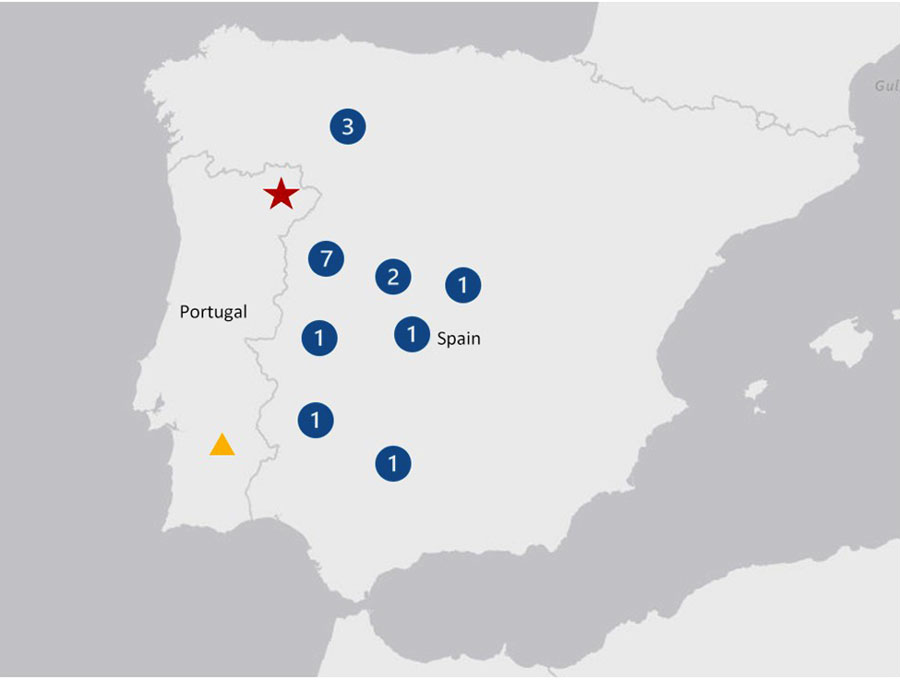Volume 31, Number 1—January 2025
Dispatch
Fatal Case of Crimean-Congo Hemorrhagic Fever, Portugal, 2024
Figure 1

Figure 1. Regions of the Iberian Peninsula where human infections with Crimean-Congo hemorrhagic fever virus were reported. Red star indicates fatal case of Crimean-Congo hemorrhagic fever, Portugal, 2024; yellow triangle, the seropositive cases detected in the Beja district, Portugal, 1985. Blue numbered icons indicate the number of human cases reported in provinces in Spain since 2013 (Salamanca, 7; León, 3; Ávila, 2; Badajoz, 1; Cáceres, 1; Córdoba, 1; Madrid, 1; and Toledo, 1).
1These first authors contributed equally to this article.
Page created: November 15, 2024
Page updated: December 22, 2024
Page reviewed: December 22, 2024
The conclusions, findings, and opinions expressed by authors contributing to this journal do not necessarily reflect the official position of the U.S. Department of Health and Human Services, the Public Health Service, the Centers for Disease Control and Prevention, or the authors' affiliated institutions. Use of trade names is for identification only and does not imply endorsement by any of the groups named above.